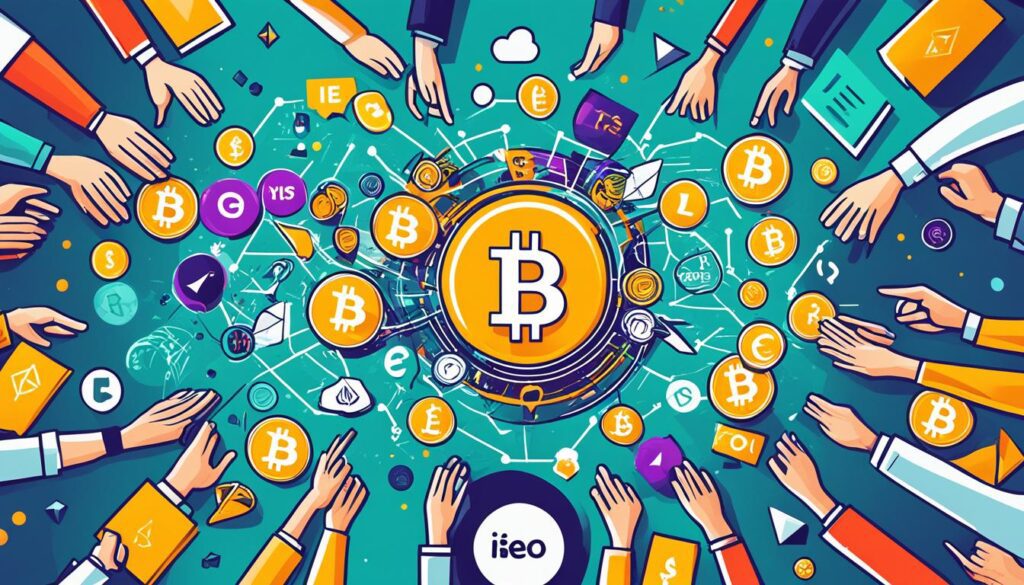Security tokens are digital assets that represent ownership or other rights to an asset. They are created through a process called tokenization, which involves transferring ownership of an asset to a blockchain and assigning it a token. Security tokens can include traditional investments like stocks and bonds, as well as other securitized assets. They are a digital form of these investments and are stored on a blockchain. Security tokens are not yet available to retail investors but are being pursued by institutions and require approval from regulatory bodies like the Securities and Exchange Commission (SEC).
Key Takeaways:
- – Security tokens are digital assets that represent ownership or other rights to an asset.
- – They are created through a process called tokenization and are stored on a blockchain.
- – Security tokens are not yet available to retail investors and require regulatory approval.
- – They provide new investment opportunities in the evolving digital asset market.
- – Understanding the differences between security tokens and cryptocurrencies is important for navigating the digital asset landscape.
Understanding Security Tokens
Tokenization is the process of transferring ownership of an asset to a blockchain and assigning it a token. This token represents ownership or other rights to the asset.
Security tokens can be created for various assets, including cars or companies. Just like traditional stock certificates, security tokens are digital representations of ownership or rights.
In a world driven by digital transformation, security tokens offer a groundbreaking approach to asset ownership. By leveraging blockchain technology, these tokens provide a secure and transparent method of verifying ownership.
But what exactly does tokenization mean? Tokenization is the conversion of real-world assets into digital tokens that can be easily transferred and traded on a blockchain. Through this process, the ownership and value of assets are divided into smaller units, allowing for increased liquidity and fractional ownership.
Tokenization enables individuals to invest in assets that were previously inaccessible or illiquid, such as real estate, art collections, or even intellectual property. It democratizes investment opportunities by breaking down barriers and granting individuals the ability to own a fraction of high-value assets. This innovation opens new doors for investors and brings asset ownership to a wider audience.
The Role of Blockchain in Security Token Ownership
Blockchain technology serves as the foundational infrastructure for security tokens, ensuring transparency, decentralization, and immutability. The distributed nature of a blockchain network eliminates the need for middlemen, reducing costs and increasing efficiency.
With blockchain as the underlying technology, security tokens offer unparalleled advantages:
- Transparency: Blockchain provides a transparent ledger, allowing stakeholders to track transactions and verify ownership.
- Security: Cryptographic techniques, combined with distributed consensus mechanisms, ensure the security and integrity of security token transactions.
- Liquidity: Tokenization enables fractional ownership, making it easier to buy and sell smaller units of an asset, leading to increased liquidity in the market.
- Global Accessibility: Blockchain technology transcends geographical boundaries, enabling investors from around the world to participate in tokenized asset markets.
By tokenizing assets on a blockchain, individuals gain greater control over their investments and streamlined access to traditionally illiquid markets.

As the world continues to embrace digital transformation, the potential applications of security tokens are vast. From real estate investments to equity crowdfunding, security tokens open up a world of possibilities for both issuers and investors.
By understanding the process of tokenization and harnessing the power of blockchain technology, individuals can navigate the evolving landscape of digital asset ownership and unlock new investment opportunities.
Security Tokens vs. Cryptocurrencies
When it comes to digital assets, two terms that often come up are security tokens and cryptocurrencies. While both are created and stored on a blockchain, they serve different purposes and have distinct characteristics.
What are Cryptocurrencies?
Cryptocurrencies, such as Bitcoin and Ethereum, are primarily designed to be used as currency or payment methods in digital transactions. They provide a decentralized and secure way to transfer value without the need for intermediaries like banks or governments.
Unlike traditional currencies issued by central banks, cryptocurrencies operate on a peer-to-peer network known as a blockchain. This technology ensures transparency, immutability, and security.
Although cryptocurrencies are not intended to be investment instruments, their increasing value has attracted investors who view them as a potential store of value or speculative asset.
What are Security Tokens?
Security tokens, on the other hand, represent ownership or other rights to an asset, whether it’s stocks, bonds, real estate, or other securitized assets. They are created through a process called tokenization, where ownership of the underlying asset is transferred to a blockchain, and a corresponding token is issued.
Security tokens offer several advantages over traditional securities. They provide fractional ownership, increased liquidity, and streamlined settlement processes. Additionally, security tokens can expand investment opportunities by enabling fractional ownership of high-value assets that were previously inaccessible or illiquid.
In order to comply with regulatory requirements, security tokens are subject to oversight by regulatory bodies such as the Securities and Exchange Commission (SEC) in the United States. This ensures investor protection and helps prevent fraudulent activities in the digital asset space.
The Key Differences
The main difference between security tokens and cryptocurrencies lies in their purpose and utility. Cryptocurrencies are primarily used as a medium of exchange or a store of value, while security tokens represent ownership or rights to an underlying asset.
Here’s a breakdown of the key differences:
| Cryptocurrencies | Security Tokens |
|---|---|
| Designed for use as currency or payment methods | Represent ownership or rights to an asset |
| Decentralized and peer-to-peer transactions | Subject to regulatory oversight |
| Varied use cases, including decentralized applications | Increased liquidity and fractional ownership |
| Volatility and speculative investment potential | Enhanced security, transparency, and efficiency |
While both cryptocurrencies and security tokens utilize blockchain technology, their intended use and regulatory framework set them apart. It’s important to consider these distinctions when evaluating investment opportunities in the digital asset landscape.
Conclusion
Security tokens are revolutionizing the digital asset landscape, unlocking new investment opportunities for individuals and institutions alike. By providing a digital representation of ownership or rights to an asset, security tokens offer a secure and transparent way to invest in a variety of assets. Stored on the blockchain, these tokens ensure the immutability and integrity of the ownership records, mitigating the risk of fraud or tampering.
Although security tokens are not yet available to retail investors, their potential is being recognized by institutions worldwide. Regulatory approval is an essential step in ensuring investor protection and market stability. As regulatory frameworks continue to develop, it is expected that security tokens will become more accessible to retail investors in the future.
Understanding the process of tokenization and differentiating security tokens from cryptocurrencies is key to navigating the digital asset market effectively. While cryptocurrencies like Bitcoin and Ethereum serve as decentralized digital currencies, security tokens represent ownership or rights to real-world assets. Recognizing the distinction between the two helps investors make informed decisions based on their investment objectives and risk appetite.
As technology continues to advance, security tokens open up exciting prospects for investment in a digital world. With improved liquidity, fractional ownership, and enhanced transparency, digital assets are poised to reshape traditional investment practices. Stay informed, keep abreast of regulatory developments, and explore the potential of security tokens in diversifying your investment portfolio.
FAQ
What are security tokens?
Security tokens are digital assets that represent ownership or other rights to an asset. They are created through a process called tokenization, which involves transferring ownership of an asset to a blockchain and assigning it a token.
What can security tokens represent?
Security tokens can represent various assets, including traditional investments like stocks and bonds, as well as other securitized assets such as cars or companies. They are a digital form of these investments and are stored on a blockchain.
How are security tokens different from cryptocurrencies?
While both security tokens and cryptocurrencies are digital assets created and stored on a blockchain, they have different purposes and uses. Cryptocurrencies, like Bitcoin and Ethereum, are designed to be used as currency or payment methods, whereas security tokens represent ownership or rights to an asset.
Who can invest in security tokens?
Currently, security tokens are not available to retail investors but are being pursued by institutions. They require regulatory approval from bodies like the Securities and Exchange Commission (SEC) before becoming accessible to a broader range of investors.
How are security tokens transforming investment opportunities?
Security tokens provide a digital representation of ownership or rights to an asset and are stored on a blockchain. As technology continues to advance, security tokens present new possibilities for investment in a digital world, expanding the range of potential investment opportunities in the digital asset landscape.










